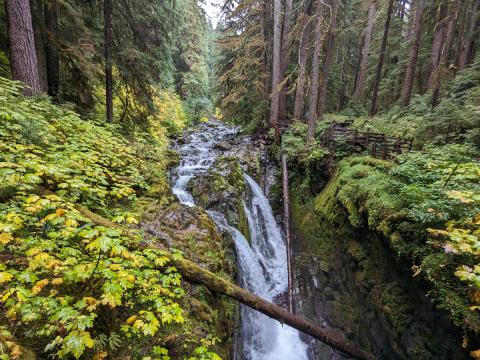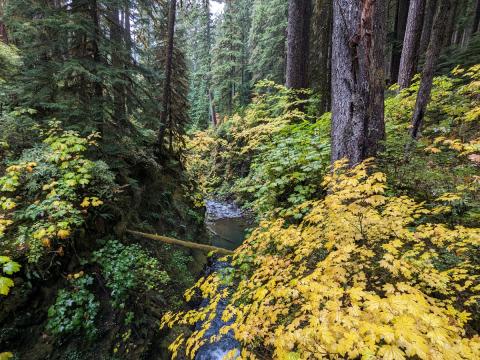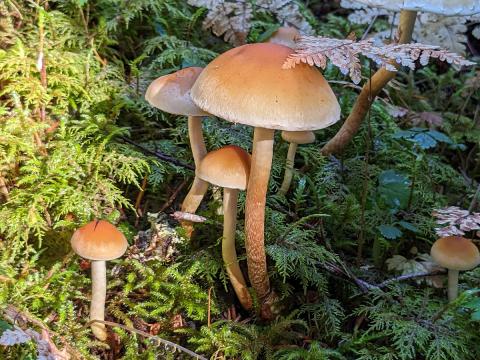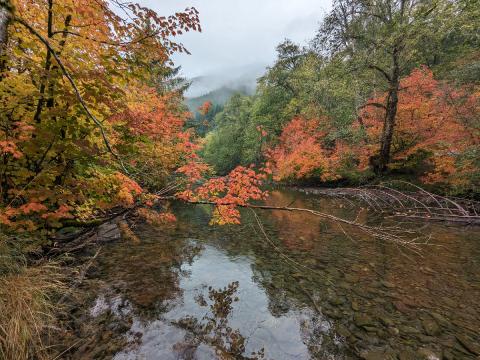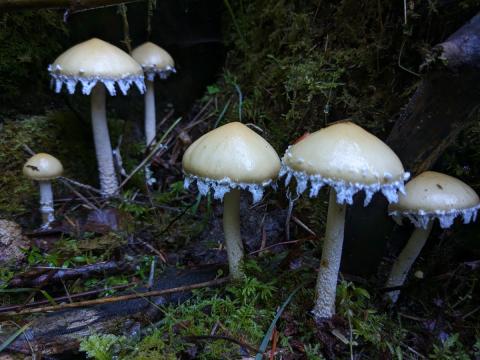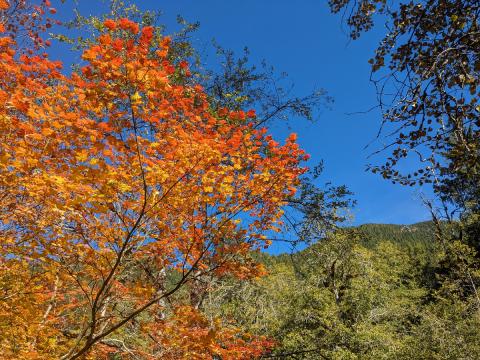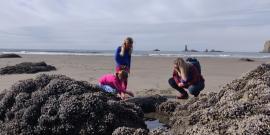
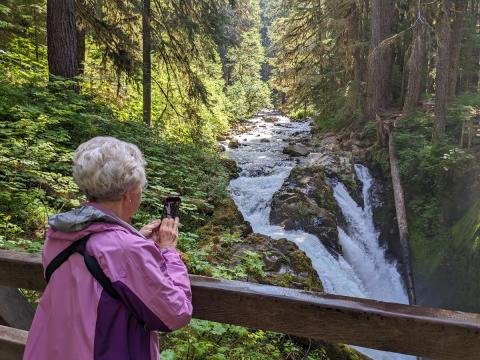
Bathe in Sol Duc Valley's Ancient Forests with Experience Olympic
Sol Duc is great for hiking and birding from June to October, especially for forest species that breed here like Varied Thrush and Red Crossbill.
Visiting the Sol Duc in late September to October on a private guided nature day tour is highly recommended for viewing jumping salmon at Salmon Cascades and a diversity of mushroom species.
The Sol Duc is packed with trails and your guide can organize a thru (one-way) downriver hike that ends with you soaking in the commercial hotsprings while she fetches the Experience Olympic vehicle.
Headwaters of the Sparkling Sol Duc River
The drive and hike to Sol Duc Falls winds though middle elevation (montane) climax forest that includes ancient Pacific Silver Fir, Douglas Fir, Western Hemlock, and Sitka Spruce.
The Valley includes numerous hikes, including a six mile loop along the river, which is one of the eleven major rivers that drain Olympic National Park.
During summer, wet conditions near the Sol Duc River allow for a luxuriant production of up to five different species of huckleberry or Vaccinium. It is fun to sample the tart black, blue, and red berries under the watchful eye of your Experience Olympic nature guide.
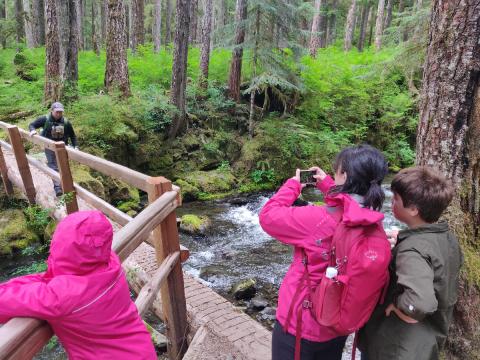

Coho Salmon Migration in Late September
Coho Salmon, like the other four species of native Pacific Salmon, embark on a one-way trip up rivers like the Sol Duc where they likely hatched. The fish usually return to spawn at about 3 to 4 years of age.
Females create a nest site, called a redd, by using their entire body and especially tail to loosen pebbles and create a divot in the stream channel. They often create more than one redd and will defend the area until their demise. Fish carcasses pass through food webs to become marine derived nutrients for the forests.
Scenic Valley and Salmon Cascade
Almost the entire 14 mile length of the Sol Duc road is in Olympic National Park, allowing visitors to enjoy ancient Douglas Fir trees hugging the twisty road adjacent to the Sol Duc River.
Salmon Cascade is about 7 miles up the road and is a not-to-be-missed fall attraction. Coho Salmon will wait until river flow is to their advantage. They like to migrate at night so there can be more active jumping later in the day.
Predators, like bobcat and river otter, like to hunt fish near this highly photographed but challenging spot for fish passage.
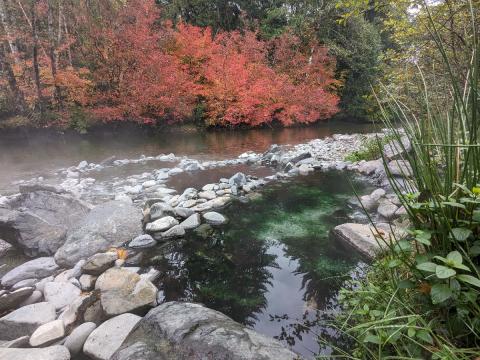
Hotsprings in Olympic National Park
Although the Olympic Mountains are not volcanic, subduction processes formed many massive volcanoes in the Cascade Mountain Range like Mt. Rainer.
The Sol Duc Valley includes commercial hotspring pools. Geothermal heated water is routed into various swimming pools that are controlled to be within a certain temperature range. Some natural pools pictured here are beautiful but only lukewarm and better enjoyed by wildlife.
According to a field guide to place names of Olympic National Park, it is possible that Sol Duc is from a Quileute word meaning, “the people living at the place of the clear sparkling water.”
Magnificent Mycology in the Sol Duc
In September or October, rain returns to the Pacific Northwest and fungi will start reproducing, often in the form of mushrooms.
Mycological Societies like the Puget Sound Mycological Society often organize their mushroom shows at the end of October since the timing of rainfall return varies year by year.
The Sol Duc River Valley is a superb place to enjoy a diversity of mushrooms, especially because of the sheer number of trails allows for easy access to different habitat types.
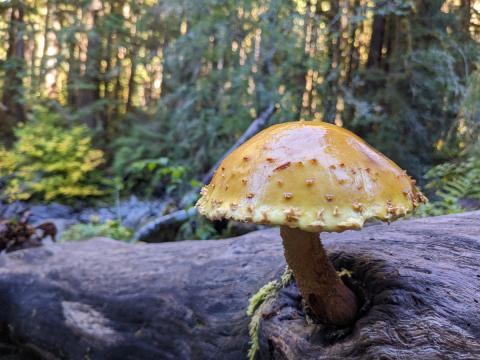
Seasonality of Montane Wildflowers
Sol Duc Falls is at roughly 2000 feet in elevation, which is in middle elevation forest, a type of forest that encompasses much of the park's near million acres. Unlike wildlife, plants can not drop down to sea level during the winter in order to avoid harsh freezing conditions.
Spring first arrives at sea level and then moves up in elevation as days get longer and the soil slowly starts to warm. Usually May is when low elevation flowers bloom but in an area like the Sol Duc, flowers often start blooming about a month later.
Bunchberry: A native northwest wildflower that grows in beautiful drifts in rich forest duff or boggy conditions. It grows well on trails near the Sol Duc river that also host huckleberries. The flower shows a center that looks like small beads that if pollinated will turn into bright red berries.
